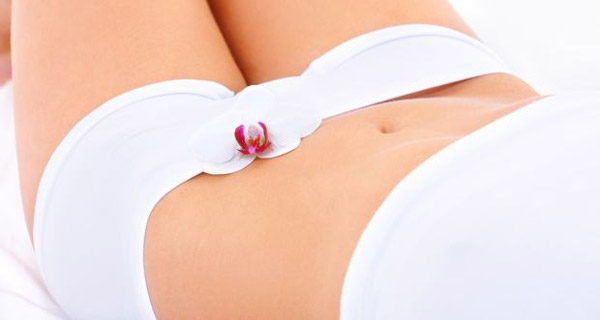
Vaginal Health is one of the most important component of overall women health. Your vagina is a pretty amazing part of your anatomy. Not only does it bring pleasure, it also helps you create and bring life into the world. Add to that its ability to keep itself clean, and you have one extraordinary body part. The vagina cleans itself by secreting natural fluids and maintaining a healthy pH to encourage the growth of good bacteria and discourage harmful bacteria from taking up residence.
What is pH?
PH is a scale of acidity and alkalinity. The measurements range from 0 to 14: a pH lower than 7 is acidic and a pH higher than 7 is considered alkaline. A healthy vaginal pH is between 3.8 and 4.5 – so the vagina is healthiest when it has an acidic pH level.
Why is pH important to vaginal health?
A slightly acidic vagina is the perfect environment for the types of good bacteria that help keep your vagina clean and healthy – and most harmful bacteria have a hard time surviving in an acidic environment. Keeping those harmful bacteria at bay is not only important for general hygiene and comfort, but also to help avoid infection and diseases. A pH level above 4.5 can make you more susceptible to vaginitis, or inflammation of the vaginal tissue, which can be caused by infections like yeast and bacterial vaginosis (the most common cause of abnormal vaginal discharge) or irritation from feminine products. Some vaginal infections can even make you more susceptible to other STIs like chlamydia and gonorrhea.
Five Things that Can Alter Your Vaginal pH and How to Avoid Them
There are many factors that can affect your vaginal pH balance – but don’t worry! There are also steps you can take to minimize those effects.
1. Douching: Some women might feel that they need to clean inside their vaginas with water or cleansers, this is not necessary since your vagina cleans itself. Even plain water has a pH of 7 – far above the acidic ideal we want – and fragrances used in some douches can irritate your vagina. Washing the external part of your vagina (the vulva) is all that’s necessary. If you notice a strong or unpleasant smell, make an appointment to see your gynecologist, you could have an infection.
2. Intercourse: The pH of semen is between 7.1 and 8, so introducing it into your vagina can trigger a change in your balance. If you experience irritation after sex, try using condoms to avoid upsetting the balance.
3. Menstruation: Blood has a pH of 7.4, so during your period your pH is elevated. Most women’s bodies can handle the difference, but some find that they are prone to infection during or after menstruation. Pay close attention to your discharge around this time for any sudden changes and if you use a cleanser – at any point in your cycle – be sure that it is pH balanced and gentle enough to help you maintain a healthy and comfortable vagina.
4. Tampons: Tampons absorb your menstrual fluid and all bacteria – good and bad. They can stop the good bacteria from keeping your pH balanced and can give the bad bacteria a surface to grow on. Try out a reusable menstrual cup instead – they collect your flow rather than absorbing it and are made of medical-grade silicone, so your natural balance is protected.
5. Breastfeeding or Menopause: Our hormones, especially estrogen, play a large part in keeping our vaginas healthy and our pH acidic. When women breastfeed or start menopause estrogen levels are low, sometimes resulting in conditions like vaginal atrophy and causing higher pH. If you’re breastfeeding or going through menopause, talk to your doctor about solutions to keep your pH in the right range. They can suggest supplements or prescribe creams to help you stay balanced.
There is also some evidence that probiotics – good bacteria like those in yogurt – can help increase the amount of good bacteria and keep your pH acidic – but not all scientists agree on the effectiveness of probiotics for prevention of infection. Paying close attention to your body is an important part of avoiding pH issues and infection – that said, remember that it’s normal for the consistency and scent of your discharge to change throughout your menstrual cycle. If you’re concerned about any symptoms you can always
visit your doctor for a check-up.
All women should be concerned about their vaginal health. A healthy vagina is naturally acidic and contains rich quantities of beneficial bacteria that help fend off infections and maintain a normal pH level. A healthy vagina will also secrete small amounts of discharge to keep itself clean, much as saliva is produced to help cleanse your mouth. Any interference with these normal conditions, and you may face vaginal irritation or infection. Here’s how to keep your vagina healthy.
Douching can interfere with the vagina’s pH levels, reducing its acidity and setting the stage for bacterial infections. Normally, vaginal pH is about 3.8 to 4.5. If your vagina has a strong or unpleasant odor, see your doctor; a douche will only cover up the smell without curing the problem that’s causing it. Avoid using harsh soaps or cleansers on the vulva or inside the vagina, as these also can affect a healthy pH balance.

You may not realize it, but a balanced, nutritious diet and drinking plenty of fluids are key to vaginal and reproductive health. In fact, certain foods may be effective in treating vaginal health problems. Cranberry juice and yogurt can potentially help prevent yeast infections and aid in their treatment. And if you experience vaginal dryness, ask your doctor if you should eat more soy products, which contain a weak form of estrogen that can aid natural lubrication.
Using condoms during sex helps to protect against sexually transmitted diseases such as HIV, genital herpes, syphilis, gonorrhea, genital warts, and chlamydia. Some of these diseases, like HIV and genital herpes, have no cure. And others, like the human papillomavirus that causes genital warts, are also known to cause cancer or lead to other diseases.
You should change condoms when switching from oral or anal sex to vaginal sex, to prevent the introduction of harmful bacteria into the vagina.
Having regular gynecological exams is crucial to maintaining your vaginal health. Every woman should have her first gynecological exam by age 21 or within three years of becoming sexually active. Gynecologists and many family physicians are trained to diagnose diseases and disorders that can harm the vagina or your reproductive system as a whole. Gynecologists also perform Pap smears, which can detect changes in vaginal cells that might indicate the presence of cancer.
Three types of vaginal infections are common: yeast infection, bacterial vaginosis, and trichomoniasis. Yeast infections are caused by several types of fungi, while bacterial vaginosis is caused by bacteria overgrowth in the vagina. Trichomoniasis is sexually transmitted. Treating these infections is crucial because not treating them can lead to unpleasant, painful, and serious reproductive health problems. All three are can be treated with oral or topical medications.
Lubrication is an important part of intercourse. Without it, the skin of the labia and vagina can become irritated and chafed, sometimes to the point of breaking. While vaginal lubrication usually occurs naturally during female arousal, some women do not produce enough natural lubricant. In this case, women should use an artificial lubricant to reduce friction and irritation, and to enhance pleasure. Avoid petroleum jelly (like Vaseline) and other oil-based products for this purpose because they can cause latex in condoms to break down and also might cause infection.
Your vagina should stay clean and dry — and what you wear can affect that. Certain types of fabrics and styles worn close to the genitals can increase heat and moisture, potentially leading to bacteria overgrowth and infections. Wear cotton underwear during the day, and avoid thongs. Try not to wear tight-fitting clothing, and change out of wet swimsuits and sweaty workout clothes as quickly as possible.
Common sense can go a long way in protecting the health of your vagina. After a bowel movement, wipe from front to back to avoid bacterial contamination of the vagina and to lower the risk of bladder infection. Change sanitary pads and tampons regularly during your period. When you’re not having your period, do not use pads or panty liners to absorb normal vaginal discharge; they will keep moisture and warmth near your vagina, which can result in infection.
Ever nosh on asparagus to have your hoo-ha—and we’re not just talking your pee—smell funny? Well, that’s one way to think about that whole “you are what you eat” connection. And it turns out, for women, it’s a pretty important one.
Healthy vaginas have a naturally acidic pH, as well as a host of healthy bacteria that ward off infections and keep everything humming along as designed, says Mary Rosser, M.D., Ph.D., ob-gyn at Montefiore Medical Center in New York.
But the foods you eat can influence that pH, changing the way your nether region smells (and even tastes). For instance, spices, onions, garlic, red meat, dairy, asparagus, broccoli, and alcohol can all affect the natural balance you’ve got going on, while fruits and fruit juices may turn things especially sweet, Rosser says. But whatever the effect, it will only last for two to three days after you eat your fill.
So when it comes to eating for two (you and your vagina, that is), she suggests filling up on fresh fruits, veggies, whole grains, and plenty of water. And if you like Greek yogurt, all the better. “Yogurt with live and active cultures are probiotics and may be involved in helping the vagina maintain a healthy acidic pH and balance,” she says. And finally, you may want to cut back on sugar for your vagina’s sake: Women with uncontrolled high blood sugar due to diabetes may be at an increased risk for yeast infections, says Rosser.

While an abnormally high vaginal pH is often a sign of vaginitis, it can also indicate the presence of sexually transmitted diseases, estrogen deficiency in menopause or pregnancy.
Consult your healthcare provider if you believe you have an abnormal vaginal pH, or have any symptoms of vaginitis, including burning, itching or unusual discharge or odor. A negative result on a pH test can still indicate the presence of a yeast infection or other cause for irritation, so it is best to let your physician interpret the results.
How to Restore Vaginal pH?
- This requires nothing more than a healthy lifestyle and basic principles of hygiene.
- Keep the area clean and dry. A regular bathing schedule, including cleaning of the area with plain water, is enough. After bathing, dab the area with a dry towel.
- Douching is actually harmful. It washes away the beneficial bacteria that stay in the vaginal region. This disturbs the vaginal pH and the area becomes prone to dryness and infections.
Similarly, avoid the use of harsh soaps on the area. - Wear loose cotton based undergarments most of the time, particularly at night times. They allow the area to breathe while you sleep.
- One should prevent moisture getting trapped in the vaginal area. Moistness predisposes to fungal infections.
- Avoid excess of tea, coffee and other carbonated drinks that directly influence the vaginal pH.
Too much of junk food is bad. Processed food contains lots of salts, preservatives, that affects the flora of the region and hence the health. - Eat healthy. Actually, it is our diet that is the key point to have a healthy body, including a healthy vagina. Consume plenty of fresh fruits and vegetables. Drink plenty of water.
- Fresh fruit juices and yogurt are the best to restore back the vaginal pH.
- Maintain hygiene in the area. Always wipe off from front to back, never the other way.
- Change your sanitary napkins frequently. Practice safe sex always. Change condoms when required.
- Avoid taking hormonal pills.
- If you observe any itching, burning or discharge from your vagina, you may use vaginal pH test strips to check if the pH has been disturbed.

Vaginal Wet Mount
A vaginal wet mount (sometimes called a vaginal smear) is a test to find the cause of vaginitis, or inflammation of the vagina and the area around the vagina camera.gif (vulva).
Vaginitis is often caused by an infection, but it may also be caused by a reaction to vaginal products such as soap, bath oils, spermicidal jelly, or douches. Vaginitis may cause symptoms such as vaginal itching, pain, or discharge.
Infections that can cause vaginitis are common and include:
Yeast infection. A vaginal yeast infection is caused by a type of yeast called Candida albicans. A yeast infection is also called a candida infection, or candidiasis. A vaginal yeast infection often causes itching and a white, lumpy discharge that looks like cottage cheese. It also causes pain with sexual intercourse. A yeast infection is not a sexually transmitted infection (STI).
Trichomoniasis. Trichomoniasis is an infection caused by a parasite (Trichomonas vaginalis). It is sometimes called trichomonas infection, trichomonal infection, or simply trich (say “trick”). Trichomoniasis causes a vaginal discharge that is yellow-green, foamy, and bad-smelling. Pain with sex or urination may be present. Lower belly pain may also be present.
Trichomoniasis is spread by sexual contact and is an STI.
Bacterial vaginosis. Bacterial vaginosis is a change in the balance of bacteria that are normally present in the vagina. The vaginal discharge is thin and milky with a strong fishy odor.
Many women have no symptoms. Bacterial vaginosis is not an STI.
Other sexually transmitted infections (STIs). Infections such as chlamydia, genital warts, syphilis, herpes simplex, and gonorrhea can also affect the vagina. These infections are found by doing other tests.
Some studies suggest that eating yogurt containing the probiotic bacteria Lactobacillus acidophilus can help prevent vaginal infections, perhaps through balancing pH. While clinical evidence for this is mixed, your doctor may recommend eating L. acidophilus, either in yogurt or in a tablet, as a preventive measure.
Women Fitness hope that above resource is educative to its women audience and shall go along way in maintaing their vaginal health and correct pH Level.
Disclaimer
The Content is not intended to be a substitute for professional medical advice, diagnosis, or treatment. Always seek the advice of your physician or other qualified health provider with any questions you may have regarding a medical condition.

